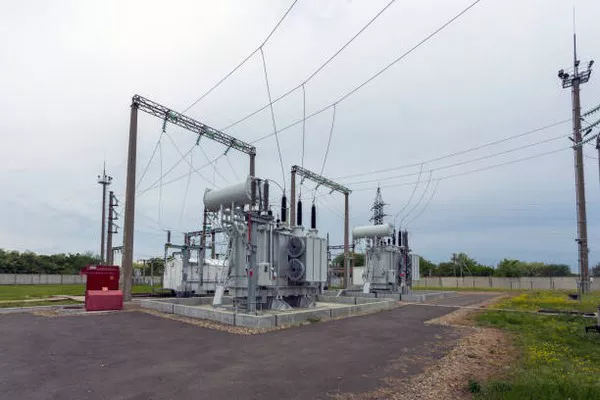In the realm of electrical engineering, the buck-boost transformer stands as a versatile and crucial component in power distribution systems. Its ability to adjust voltage levels with efficiency and precision makes it an indispensable tool for maintaining stable power supply across various applications. This article delves into the inner workings of a buck-boost transformer, shedding light on its fundamental principles and applications.
Fundamentals of Buck-Boost Transformers
A. Basic Structure
A buck-boost transformer is essentially a type of autotransformer, consisting of a single winding and a magnetic core. This winding serves both as the primary and secondary winding, allowing for a compact and cost-effective design. The key feature distinguishing the buck-boost transformer is its ability to either boost or buck the input voltage, providing flexibility in adapting to different voltage requirements.
B. Voltage Regulation
The primary function of a buck-boost transformer is to regulate the output voltage. This regulation is achieved through variations in the turns ratio of the winding, enabling the transformer to step up (boost) or step down (buck) the voltage as needed. By manipulating the tap connections on the winding, users can select the desired voltage ratio, allowing for precise control over the output.
Working Principles of a Buck-Boost Transformer
A. Boost Mode
In the boost mode, the buck-boost transformer steps up the input voltage to a higher level. This is particularly useful in scenarios where the required voltage exceeds the available input voltage. The turns ratio is adjusted accordingly to achieve the desired boost, with the transformer essentially functioning as a step-up autotransformer.
The boost mode is commonly employed in applications such as voltage stabilization for sensitive electronic equipment, ensuring that the devices receive a constant and optimal voltage supply for reliable operation.
B. Buck Mode
Conversely, in the buck mode, the buck-boost transformer steps down the input voltage to a lower level. This mode is crucial in scenarios where the available voltage surpasses the requirements of the connected equipment. By adjusting the turns ratio, the transformer acts as a step-down autotransformer, providing a controlled and reduced voltage output.
The buck mode finds applications in various industries, including power distribution systems, where the transformer helps adapt voltage levels to meet the specific needs of different equipment and devices within the network.
Applications of Buck-Boost Transformers
A. Industrial Settings
Buck-boost transformers play a pivotal role in industrial settings where the power requirements of different machines and devices can vary significantly. The ability to adjust voltage levels ensures that each piece of equipment receives the appropriate power supply, contributing to optimal performance and efficiency. Industries such as manufacturing, mining, and processing plants benefit from the versatility of buck-boost transformers in maintaining stable power distribution.
B. Commercial Buildings
In commercial buildings, where diverse electrical equipment coexists, the implementation of buck-boost transformers becomes crucial. These transformers help address voltage discrepancies, providing a uniform and regulated power supply to sensitive electronic devices such as computers, servers, and communication systems. This ensures the longevity and reliability of equipment, minimizing the risk of damage due to voltage fluctuations.
C. Renewable Energy Systems
Buck-boost transformers find application in renewable energy systems, where the voltage output from solar panels or wind turbines may fluctuate based on environmental conditions. By integrating buck-boost transformers into the system, engineers can stabilize the voltage output, ensuring a consistent and reliable power supply to the electrical grid or energy storage systems.
Advantages and Considerations
A. Efficiency
One of the primary advantages of buck-boost transformers is their high efficiency in voltage regulation. The autotransformer design minimizes energy losses, making them a cost-effective solution for adjusting voltage levels. This efficiency is particularly crucial in environments where energy conservation is a priority.
B. Compact Design
The single-winding design of buck-boost transformers results in a more compact and lightweight structure compared to traditional transformers with separate primary and secondary windings. This compact design makes them suitable for applications with limited space, offering a practical solution in various industries and settings.
C. Considerations for Implementation
While buck-boost transformers offer numerous benefits, it is essential to consider certain factors during their implementation. Proper sizing and selection based on the specific requirements of the application are crucial to ensure optimal performance and longevity. Additionally, regular maintenance and monitoring are recommended to identify and address any potential issues promptly.
See Also How Does An Ac To Dc Transformer Work? A Complete Overview
Conclusion
In conclusion, the buck-boost transformer stands as a remarkable engineering solution, providing a flexible and efficient method for voltage regulation. Its dual functionality, allowing for both boosting and bucking of voltage, makes it an indispensable component in diverse applications ranging from industrial settings to commercial buildings and renewable energy systems. Understanding the fundamental principles and advantages of buck-boost transformers empowers engineers and professionals to make informed decisions when integrating these transformers into power distribution systems, contributing to the stability and reliability of electrical networks.

